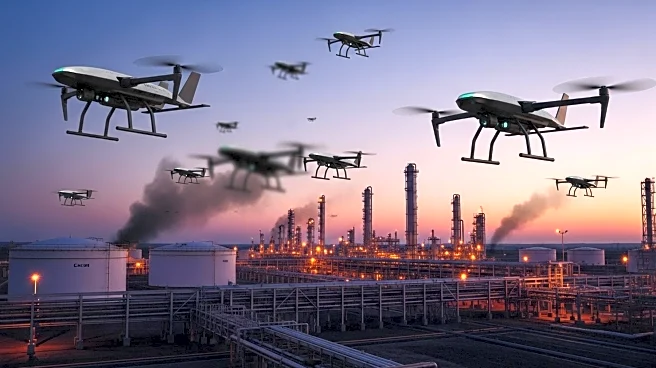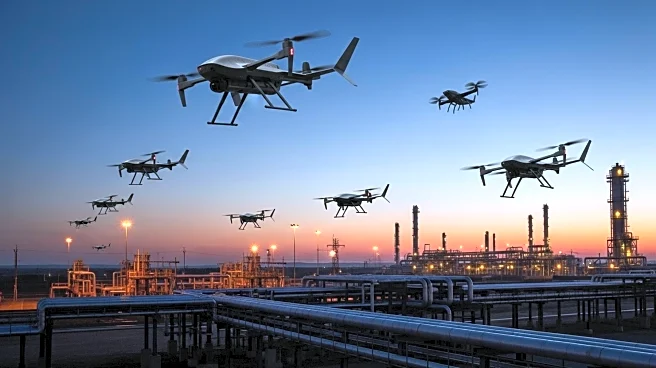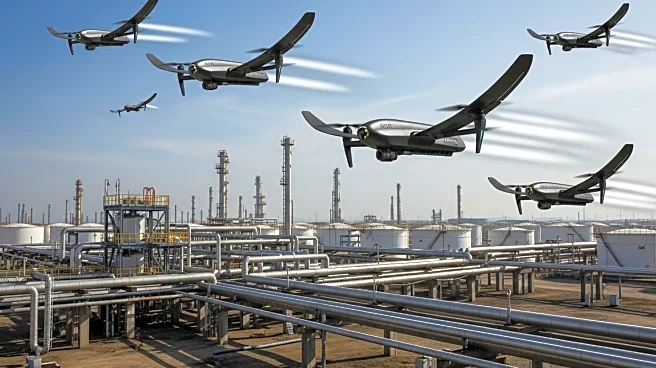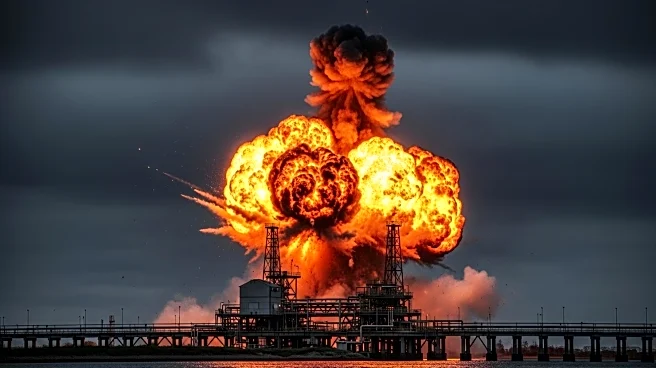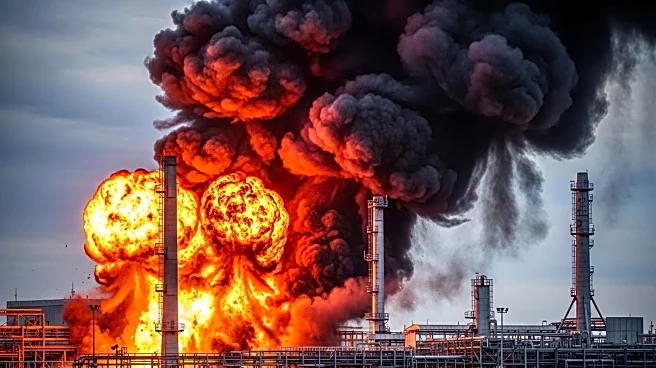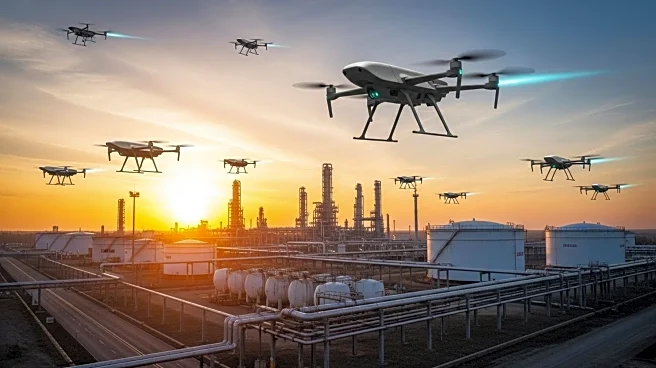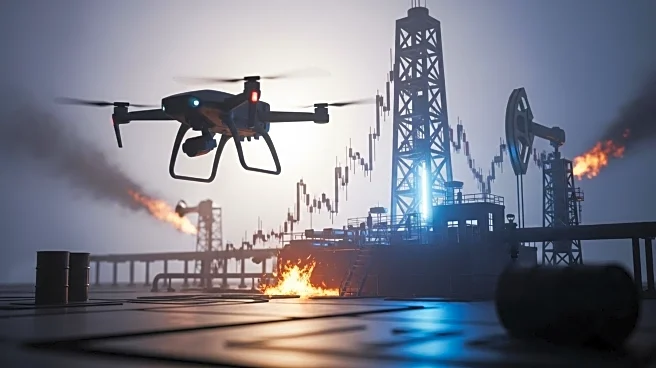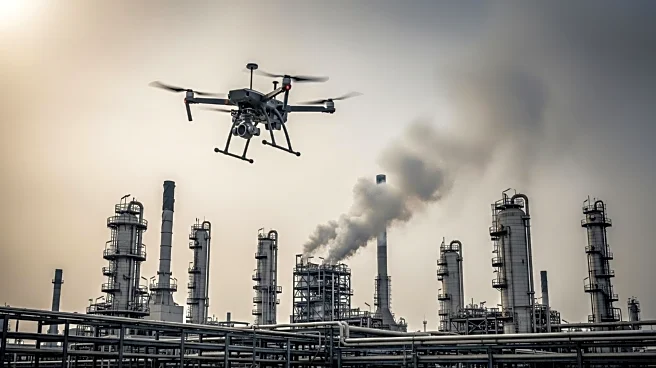What's Happening?
Ukraine has conducted a significant drone attack on Russia's largest oil terminal on the Baltic Sea, targeting the Primorsk oil port in the Leningrad region. The attack involved over 221 drones, with 28 being intercepted. The aerial assault caused a fire at a vessel and pumping station, which was extinguished without casualties. The port is crucial for Russia's maritime exports and part of its 'shadow fleet' used to bypass international sanctions. The attack also targeted several pumping stations feeding the Ust-Luga terminal, impacting Russia's oil refining capacity.
Why It's Important?
This drone attack on key Russian oil infrastructure highlights Ukraine's strategy to disrupt Russia's energy exports and economic stability. By targeting oil terminals, Ukraine aims to limit Russia's fuel supplies and increase operational costs. The attack could exacerbate existing challenges faced by Russia due to Western sanctions, potentially affecting global oil markets and energy prices. The incident underscores the vulnerability of critical infrastructure to drone warfare and the need for enhanced security measures.
What's Next?
Russia may respond by strengthening its air defense systems and increasing security around vital energy infrastructure. The attack could lead to further diplomatic tensions and impact ongoing peace negotiations. International stakeholders may seek to mediate the conflict to prevent further disruptions in global energy supply chains.
Beyond the Headlines
The use of drones to target energy infrastructure raises concerns about the environmental impact and potential civilian casualties. As drone technology becomes more accessible, nations may need to develop international regulations to govern their use in conflict. The attack also highlights the strategic importance of energy resources in geopolitical conflicts.
